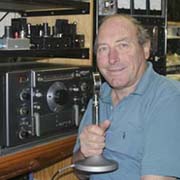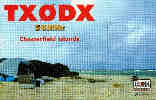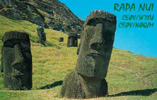|
COUNTRIES
WORKED ON SIX METRES BY VK2BA
| 1 - New Zealand,
ZL3QK, 06JAN1978 |
| 2 - Norfolk Is,
VK9NI, 08JAN78 |
| 3 -
Australia, VK2HZ, 19DEC78 |
| 4 - Japan,
JH4SSP, 19DEC78 |
| 5 - Papua New
Guinea, P29BH, 07JAN79 |
| 6 - New
Hebrides, YJ8ZV, 07JAN79 |
| 7 - Guam, KG6DX,
12MAR79 |
| 8 - Alaska,
WA4TNV/KL7, 13MAR79 See note 1 |
| 9 - USA, W6XJ,
17MAR79 |
| 10 - Korea,
HL9TG, 02APR79 |
| 11 - Hawaii,
KH6IAA, 05MAR80 |
| 12 - Mexico,
XE1GE, 09APR80 |
| 13 - Marshall
Is, KX6QC, 13APR80 |
| 14 - Nauru,
C21NI, 13SEP80 |
| 15 - Lord Howe
Is, VK2YHA, 06OCT80 |
| 16 - Willis Is,
VK9ZG, 24OCT80 |
| 17 - Caymen Is,
ZF2DN, 02APR81 |
| 18 - Johnston
Atoll, KH3AB, 11APR81 |
| 19 - Tahiti,
FO8DR, 12APR81 |
| 20 - American
Samoa, AH8A, 20APR81 |
| 21 - Brunei,
VS5DX, 25APR81 |
| 22 - Solomon Is,
H44PT, 04FEB82 |
| 23 - Fiji,
3D2JT, 03APR82 |
| 24 - Tonga,
A35JT, 11APR82 |
| 25 - Macquarie
Is, VK0AP, 18DEC82 |
| 26 - Niue Is,
ZK2RS, 29DEC82 |
| 27 - Chatham Is,
ZL4OY/C, 19JUN83 |
| 28 - Kermadec
Is, ZM8OY, 10DEC85 |
| 29 - Western
Samoa, 5W!GA, 05DEC86 |
| 30 - New
Caledonia, TO8KI, 11DEC87 |
| 31 - Tuvalu,
T20AR, 15DEC87 |
| 32 - Mellish
Reef, VK9ZM, 13JAN89 |
| 33 - Okinawa,
JR6HI, 15MAR89 |
| 34 - Turks &
Caicos Is, VP5D, 25MAR89 |
| 35 - Guantanimo
Bay, KG4SM, 25MAR89 |
| 36 - Aruba Is,
P43AS, 26MAR89 |
| 37 - North Cook
Is, ZK1WL, 28MAR89 |
| 38 - Tarawa,
T30DJ, 28MAR89 |
| 39 - Guatemala,
TG9AWS, 28MAR89 |
| 40 - Costa Rica,
TI2NA, 29MAR89 |
| 41 - El
Salvador, YS1ECB, 30MAR89 |
| 42 - Monserrat,
VP2MO, 01APR89 |
| 43 - Venezuala,
DL3ZM/YV5, 01APR89 |
| 44 - Neth.
Antilles, PJ9JT, 02APR89 |
| 45 - Puerto
Rico, KP4EIT, 02APR89 |
| 46 - Dominican
Republic, HI8WPC, 02APR89 |
| 47 - American
Virgin Is, KP2A, 02APR89 |
| 48 - Indonesia,
YC0UVO, 03APR89 |
| 49 - Revilla
Gigedo, XF4L, 14APR89 |
| 50 - South Cook
Is, ZK1CG, 16APR89 |
| 51 - Cuba,
CO2KK, 16APR89 |
| 52 - Belize,
V31PC, 20APR89 |
| 53 - Haiti,
HH7PV, 19SEP89 |
| 54 - Auckland
Is, ZL9TPY, 21JAN90 |
| 55 - Jamaica,
6Y5FS, 24MAR90 |
| 56 - Christmas
Is, T32IO, 28MAR90 |
| 57 - Kure Is,
KH6JEB/KH7, 31MAR90 |
| 58 - Wallis Is,
FW/W6JKV, 17APR90 |
| 59 - Jarvis Is,
AH3C/KH5J, 17APR90 |
| 60 - East
Caroline Is, V63AO, 02APR91 |
| 61 -
Philippines, KG6UH/DU1, 06APR91 |
| 62 -
Zaire, 9Q5EE,
06APR91 - Long Path |
| 63 - Martinique,
FM5WD, 07APR91 |
| 64 - Saipan,
AH6JJ/AH0, 27APR91 |
| 65 -
Azores, CU3/N6AMG,
27NOV91 - Antipoidal
|
| 66 - Denmark,
OZ4VV, 08FEB92 |
| 67 - Italy,
I4CIL, 16FEB92 |
| 68 - Slovenia,
YU3ZV, 16FEB92 |
| 69 - Belau,
KC6/W0RRY, 04MAR92 |
| 70 - Rotuma Is,
3D2AG, 01APR92 |
| 71 - Banaba Is,
T33RD, 27MAR99 |
| 72 - Canton Is,
T31K, 28SEP99 |
| 73 - Midway Is,
KH4/W4ZYV, 26OCT99 |
| 74 - Panama,
HP2CWB, 07NOV99 |
| 75 - Poland,
SP6ASD, 08NOV99 |
| 76 - Ukraine,
US5CCO, 08NOV99 |
| 77 -
Chesterfield Is, TX0DX, 25MAR00 |
| 78 - East Timor,
4W6/VK2QF, 31MAR00 |
| 79 - Hong Kong,
VR2LC, 05APR00 |
| 80 -
Canary Is, EH8BPX,
05APR00 - Long Path |
| 81 - Nicaragua,
YN1SW, 08APR00 |
| 82 - The
Grenadines - West Indies, J87AB,08APR00 |
| 83 - Pitcairn
Is, VP6BR, 08APR00 |
| 84 - Marquesas
Is, FO0TOH, 09APR00 |
| 85 - Tadzikistan,
EY8CQ, 11NOV00 |
| 86 - E.Malasia,
9M6BAA, 29MAR01 |
| 87 - Easter Is,
CE0Y/W7XU, 09APR01 |
| |
Note 1: In
response to some incorrect information reported regarding contacts with
Alaska, I have claimed WA4TNV/KL7 (Shemya Is) as my first contact with
that country. Shemya Island, although classed as Alaska, is well removed
from the mainland. I have also worked mainland Alaska on a number of
occasions, the last openings in which I took part being on 8th and 9th
March 1992 when I worked AL7FH, NL7OW, KL7HBK and AL7C. There was also a
short opening on 27th March 2001 when KL7FZ was heard at my QTH.
Note 2: All
countries from #1 to #70 were worked from Sydney NSW (QF56). Countries
from #71 onwards were worked from Megan NSW (QF69)
|
THE FIGURES OF THE DAY
Ham Radio operators frequently comment on "the figures of
the day". This is particularly so for Six Metre operators
who are forever trying to use these figures to gain some
insight into the expected propagation. These figures refer
to the Solar Flux Index (SFI), the A Index and the K Index.
These figures are broadcast on WWV at eighteen minutes after
the hour. They are also available from many sources over the
Internet. Since there is often confusion about what they are
and what they mean, I will include a very brief summary.
However, I do not find the figures very useful other than in
a broad sense. There is no substitute for being active on
the band. That is the best way to find the openings.
SOLAR FLUX
This is a measure of the sun's radiation at 2800MHz (10.7
cm wavelength) taken daily at 1700Z in Ottawa. The flux
figure correlates well with the ionisation of the ionesphere
F region and the Maximum Usable Frequency (MUF) for radio
communication. A Solar Flux of 66 represents a quiet sun
during the lowest years of a Sunspot Cycle. This figure may
reach 300 or more during the peak. DX is usually enhanced
during periods of high SFI and one should be more observant
during these times. I have seen the 50MHz band open from
Australia to USA with a SFI of only 120, and I have often
experienced dead conditions when the SFI has been over 250.
Personally, I place very little reliance on the SFI. If the
dates, and position on the Solar Cycle are correct, I look
for DX irrespective of the SFI.
THE 'A' INDEX
This is a twenty four hour figure for the activity of
the Earth's geomagnetic field, on a scale of 0 to 400 or so.
A quiet magnetic field (A index of 10 or less) is
characteristic of the best HF propagation conditions due to
the low absorbtion of wave energy. It has been observed that
a magnetic storm producing an A index of 30 or more may
produce a 50MHz opening a day or so after the event. This
effect is more pronounced during the equinox periods (a
month or so either side of the equinox). Since the A Index
is a twenty four hour figure, it therefore refers to the
previous universal time day.
THE 'K' INDEX
This is similar to the A Index except that it is as near
to a current figure that can be given. However it is
presented on a quasi-logarithmic scale running from 0 (very
quiet) to 9 (extremely disturbed).
For a given magnetic obsevatory, measurements of magnetic
activity are made every three hours. The value is directly
related to the total deviation in gammas from the quiet day
curve of the most disturbed component in the field. The
gamma ranges correspondingto the K values vary between
observatories because of the difference in magnetic latitude
but at all stations the scale is established such that the
lower range limit for K = 9 is 100 times the upper limit for
K = 0.
Since the K values are computed for three hour intervals,
the A Index is then computed to have one value to describe
the magnetic activity for the entire day. Since the K values
are quasi-logarithmic, an equivalent amplitude (Ak)
has been established to enable a standard conversion back to
an almost linear scale. The Ak factors, ranging from 0 to
400 are then averaged to find the single A value for the
twenty four hour period (see Table 1). High A Indices of
about 30 or more (K = 4) indicates a probability of DX
within within a day or so. This is a good time to stay home!
The information in Table 1 has been included because these
indices are frequently referred to to by amateurs,
especially on 50MHz.
|
K |
0 |
1 |
2 |
3 |
4 |
5 |
6 |
7 |
8 |
9 |
|
Ak |
0 |
3 |
7 |
15 |
27 |
48 |
80 |
140 |
2424008 |
400 |
Table 1a -
Standardized conversion from K to AK
|
K
Index values for given 3 hour period |
Ak
equivalent |
|
4 |
27 |
|
5 |
48 |
|
3 |
15 |
|
3 |
15 |
|
3 |
15 |
|
3 |
15 |
|
2 |
7 |
|
4 |
27 |
|
|
Total = 169 |
Table 1b -
Method for calculating a single A value for a given 24 hour
period.
First convert the K values for each three hour period to its
Ak equivalent and then total these eight numbers. In this
example, the total is 169. Averaged over eight
intervals this gives an A Index of 21.
If we measured at Fredericksburg it would be known as the
Fredericksburg A Index (Af). There is also an A Index called
called the Planetary A Index (Ap). which is computed by
averaging A values from stations around the world in order
to gain an A Index that reflects the state of the field on a
global scale rather than just one station. Normally, there
is not much variation between the various A Indices. |
|










